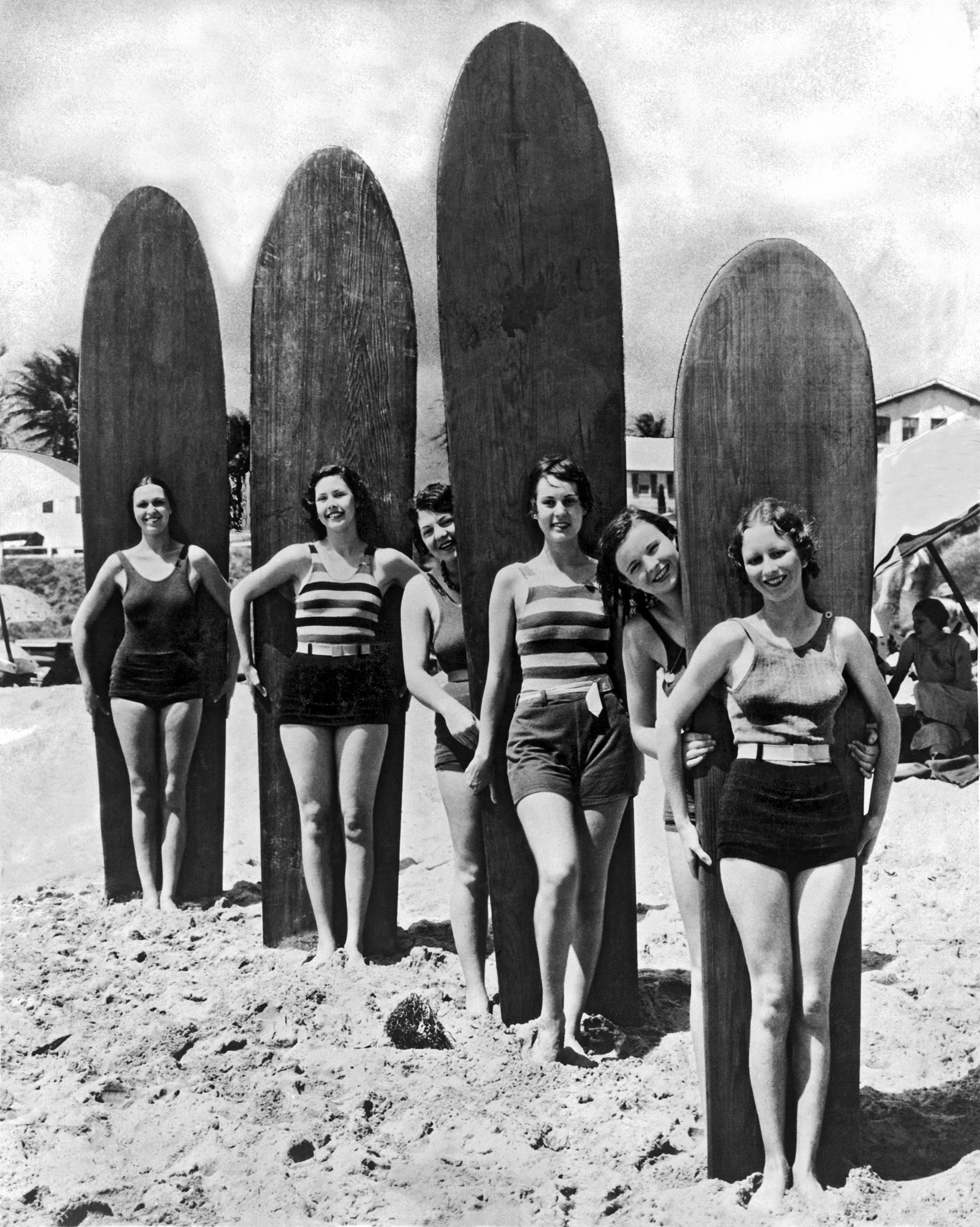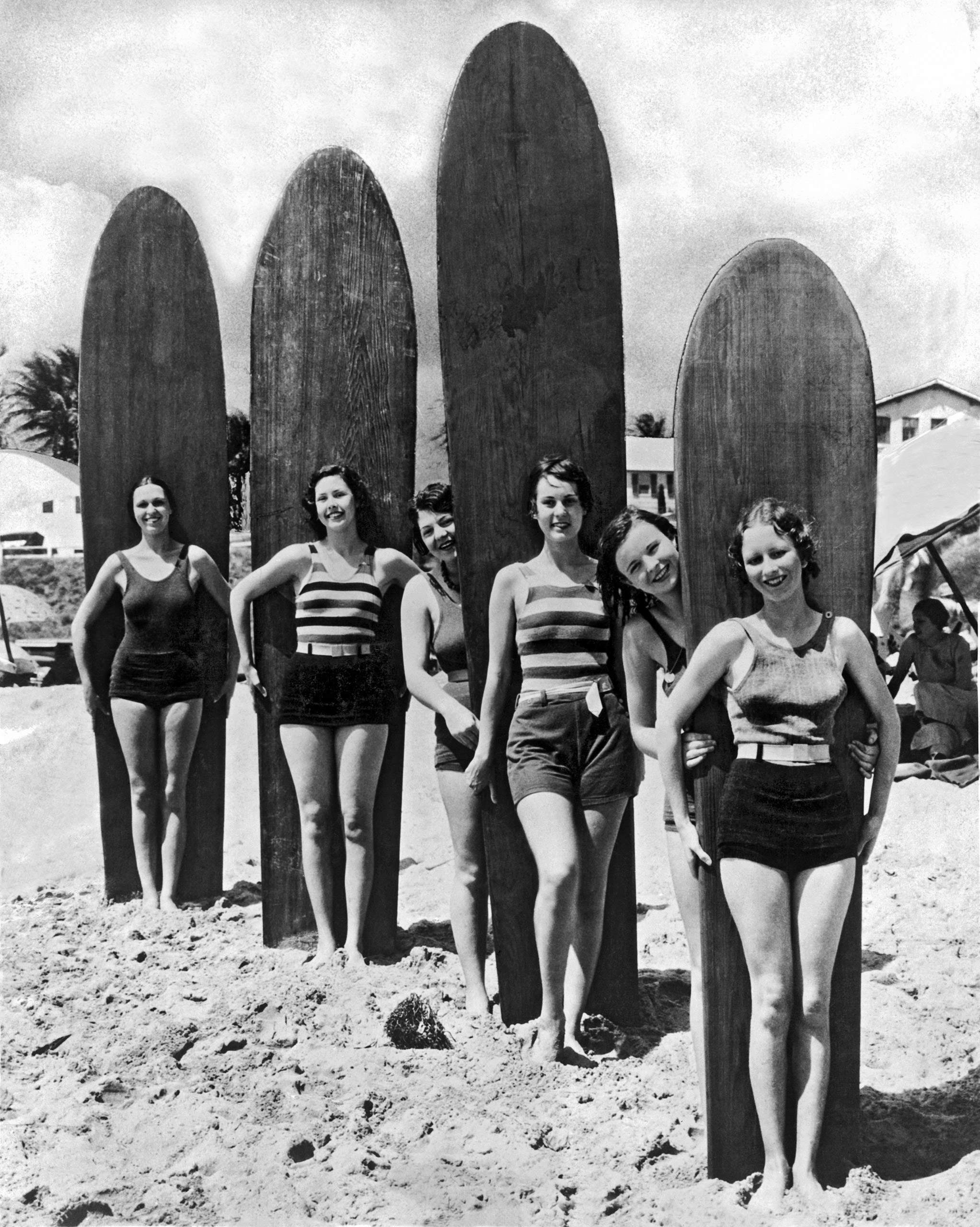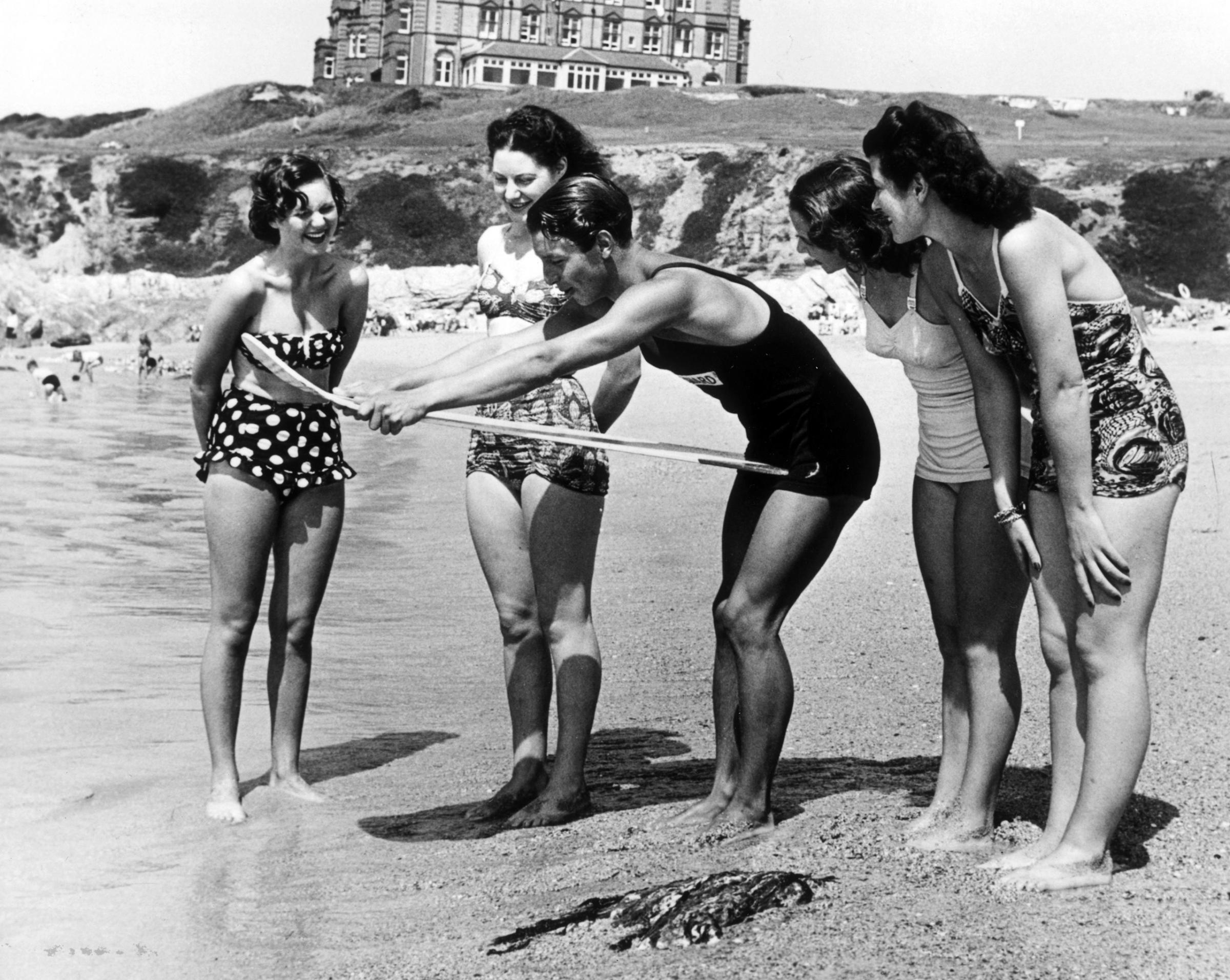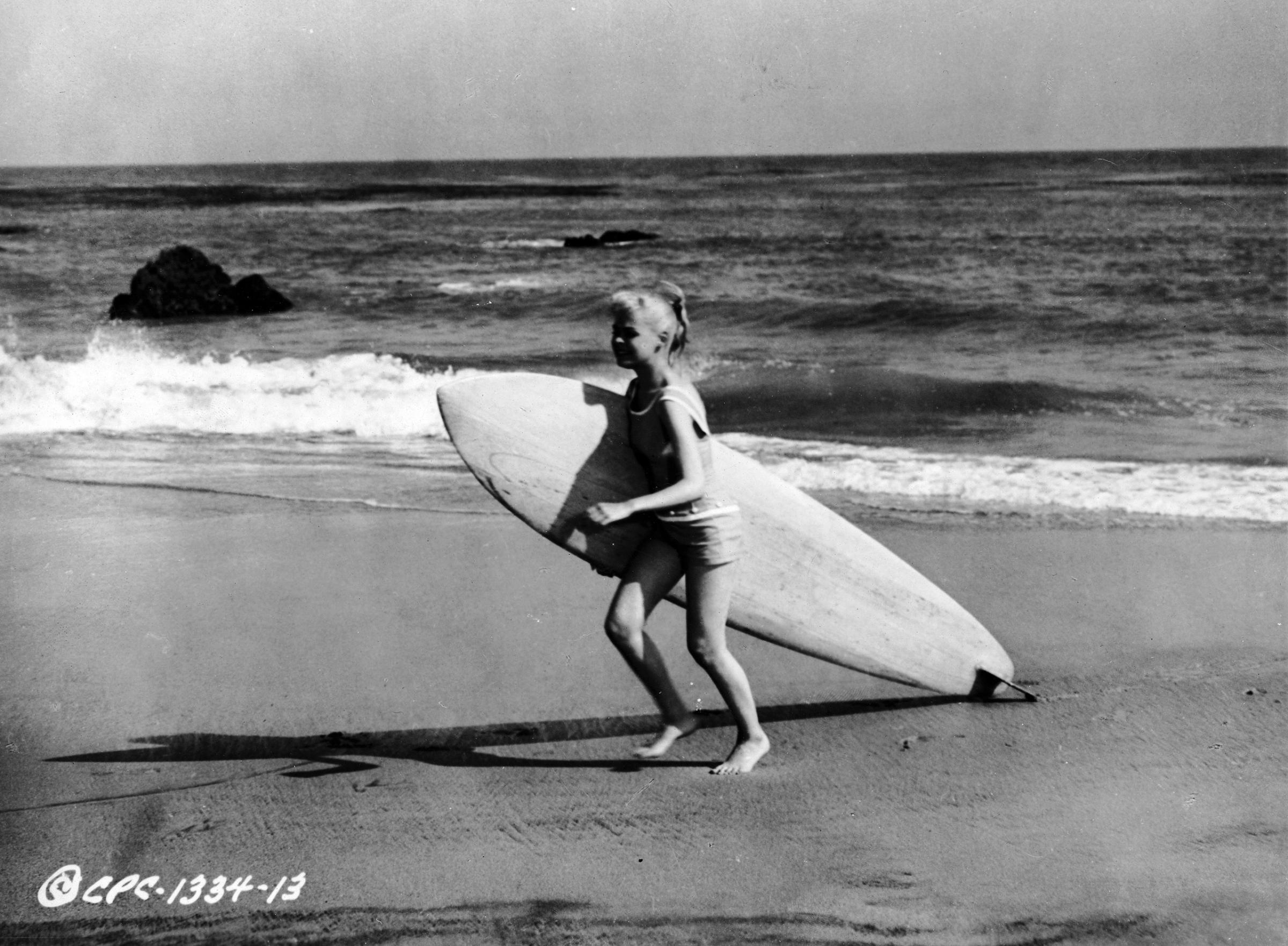
Think back on the popular image of surfing during the post-World War II years when the sport took off in Malibu, Calif., and the surfers you picture are likely to be male. And that image is, in part, correct. While Hawaiians have told stories about women catching waves alongside men in perfect harmony for centuries, surfing in the continental U.S. started out as a boys’ club. But that doesn’t mean women aren’t part of the early history of American and international surfing, as these vintage photos clearly show. And on International Surfing Day, which falls on Monday, it’s worth remembering their role.
Though some women began surfing earlier, up until the mid-20th century they “were just expected to be on the beach and be props,” says Matt Warshaw, author of The History of Surfing and the Encyclopedia of Surfing. Some of that had to do with the wooden boards used at the time being so heavy. Once men started making lighter, thinner boards for their girlfriends in the early 1950s, there emerged “a few girl surfers out at Malibu, like Vicki Flaxman, who were on beach every day, who got good at surfing really fast and seemed to be accepted.”
One particular female surfer would become world-famous for trying to be a part of the boy’s club. Los Angeles native Kathy Kohner started learning to surf in the summer of ’56 and earned the nickname “Gidget” because a Malibu regular Terry “Tubesteak” Tracy thought the 5-foot-tall 10th grader looked like “girl midget.”
Get your history fix in one place: sign up for the weekly TIME History newsletter
A crush on one of the boys motivated her to practice. Speaking to TIME by phone, Kohner, now Kathy Zuckerman, 75, recalls recording in her diary “every time the love interest was at Malibu. And if he wasn’t at Malibu, it was like, ‘Oh, I’ll have to paddle harder to make this day well worth it.'”
The older boys treated her like a kid and would “tease me, throw my board over the fence,” she recalls. “One of the guys disconnected the distributor in my car. Years later, I found out it was because I brought along a girl friend who was very well-endowed, and it was the only way they could keep looking at her.”
Her experiences inspired her father, Hollywood screenwriter Frederick Kohner, to pen the bestselling 1957 novel Gidget, to which LIFE magazine devoted an Oct. 27, 1957, photo essay called “Gidget Makes the Grade” by photographer Alan Grant. The surfing girl became a nationwide sensation after the 1959 film adaptation starring Sandra Dee and the 1960s TV adaptation starring Sally Field. But by the time the first film came out, Kohner says, she had put her surfboard away and gone off to college. (Incidentally, she briefly became a travel agent like the Gidget in the second TV adaptation (late 80s) before moving into the restaurant industry, where she’s worked for 35 years.) Nowadays, while she doesn’t surf anymore, she’s still friends with the boys with whom she used to surf (including her old crush), and she gets to be “Gidget” full-time as the so-called “Ambassador of Aloha” at the restaurant Duke’s Malibu, which displays her pictures on the wall and sells Gidget books.
“I would say that the Gidget movie in 1959 was the start of the billion-dollar surf industry. There’s no question about it,” she says.
Warshaw acknowledges that “Gidget became a great female surf icon” who inspired droves of women to pick up the sport, but laments that the most-skilled female surfers of that time period don’t have the same name-recognition— like Margo Oberg, Linda Benson and two-time world champion surfer Joyce Hoffman, to name a few.
“There are women surfers to this day who cite [Gidget] as someone who inspired them, but she’s a symbol more than a real thing,” he says.
But Gidget didn’t mean women were immediately accepted into the surfing mainstream, he says. Even as the Women’s International Surfing Association was founded in the mid-’70s, female surfers were often judged on their looks rather than their skill. Even after Roxy-sponsored four-time world champion Lisa Andersen stood out during the surfing craze of the 1990s, Warshaw says that—after interviewing female surfers over the years—there is still a feeling among surfers that women are more likely to get attention for being buxom blondes than athletes.
“Periodically, there are people and events that seem to show it’s getting better—and one of the events was not long after World War II in Malibu—but the sport remains ridiculously sexist,” Warshaw argues.
The real-life Gidget doesn’t see it that way.
“There are women that have surf schools, there are fantastic women surfers, I definitely do not see it as a male-oriented sport,” she says. “It’s a very mainstream type of sport that women and men both do. Now big wave surfing? I just saw video of Bethany Hamilton surfing at Jaws [a big wave spot on Maui’s north shore]. That is pretty amazing. I don’t see it as, ‘She’s a woman.’ I just see think that’s amazing…Cowabunga! It’s the ultimate, as Sandra Dee said in the Gidget movie.”




















More Must-Reads from TIME
- Donald Trump Is TIME's 2024 Person of the Year
- Why We Chose Trump as Person of the Year
- Is Intermittent Fasting Good or Bad for You?
- The 100 Must-Read Books of 2024
- The 20 Best Christmas TV Episodes
- Column: If Optimism Feels Ridiculous Now, Try Hope
- The Future of Climate Action Is Trade Policy
- Merle Bombardieri Is Helping People Make the Baby Decision
Write to Olivia B. Waxman at olivia.waxman@time.com